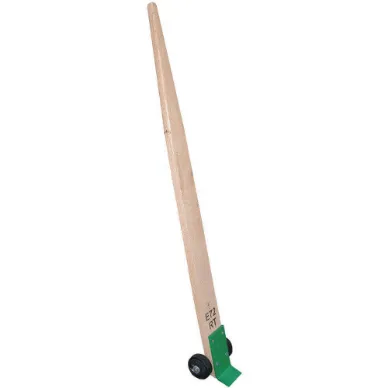Fairbanks E-72-RT pry bar is designed for prying, positioning and aligning applications. It is used to lift, scrape, pull and wedge metal, wood, and stones with less effort.
Features:
- Fairbanks E-72-RT pry bar is designed for positioning, prying and aligning operations in construction, maintenance & repair applications.
- It features a reversed bevelled nose iron with tough "E" lever dollies that easily support exceptionally high loads and are fastened to the handle for further strength.
- This pry bar provides a load capacity of up to 5000 lbs.
- The oak hardwood handles on this E-72-RT pry bar have smooth, rounded edges and a nose iron that measures 5 inches broad by 3 inches deep.
Frequently Asked Questions:
Q. What are the types of pry bars?
A.
- Alignment pry bar
- Claw pry bar
- Digging pry bar
- Flat pry bar
- Gooseneck pry bar
- Heavy-duty pry bar
- Moulding pry bar
- Rolling head pry bar
Q. What is the difference between a crowbar and a pry bar?
A. Pry bars are generally thinner and flatter than crowbars, making them ideal for intricate tasks.
Q. What is the difference between a wrecking bar and a pry bar?
A. The main difference between a pry bar and a wrecking bar is the complexity of their task. The pry bar is typically flatter and thinner than a wrecking bar, making it ideal for more intricate tasks.
Q. What are rolling head pry bars employed for?
A. Rolling head pry bars come with a rolling head hook end. These bars provide the leverage required to pry objects apart effectively. They can also be used to align holes or position the parts of a machine for precise assembly.
Q. Which tool can never be used as a pry bar?
A. Screwdrivers can never be used as a pry bar.
 Change Country
Change Country


